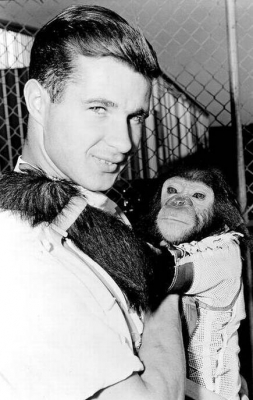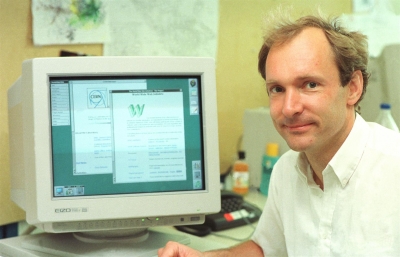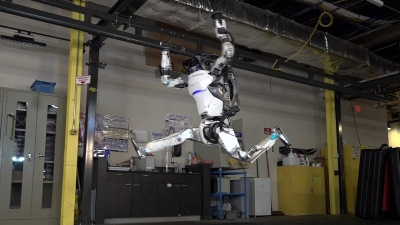
On November 29, 1961, Enos, a chimpanzee, flew into space. While the spaceflight made Enos the first chimpanzee to orbit the Earth, it also subjected the animal to terrible equipment malfunction.
It is well established that the Space Age was essentially a two-horse race to begin with, with Soviet Union and the U.S. being the two protagonists. And while Soviet Union did have the early lead, the Americans caught up and achieved the first human landing on the moon, which was at the forefront of both countries’ objectives.
The annals of human spaceflight, however, aren’t occupied only by human beings. For, before we human beings ventured into space, we needed assurance that it was indeed possible. And for that, we turned to animals.
While some of them enjoy celebrity status, some others are merely footnotes in history. Enos, a chimpanzee, was among those that convinced biologists (on the American side in this case) that animals’ bodies and minds could function even while out in space.
Intense training
Brought from the Miami Rare Bird Farm in April 1960, Enos clocked up over 1,250 hours of training, far more intense than that which Ham, another chimpanzee and the first hominid in space, went through. His selection for the Project Mercury flight that he went on to be a part of, however, happened just days before the eventual launch.
Hours before the launch, Enos, weighing 39 pounds (17.69 kg) underwent a physical examination, was connected to sensors while he stood still, allowed himself to be secured onto a couch built for the purpose and rode the transfer van that took him to the launch vehicle area, before being moved inside the spacecraft.
Relaxed despite delay
Enos’ condition was monitored inside the Mercury capsule. Even though the holds during the countdown lasted for hours due to various faults, Enos was largely relaxed, save for an occasion when the hatch was opened and closed to allow a switch to be correctly positioned.
Walter Williams, the mission director, was referred to by his peers as a “master in imparting a need for orderly urgency”. He did just that during the countdown for this mission, driving from his usual position at the mission control centre to the pad to personally express his desire for things to move in an orderly manner.
Despite losing a lot of time, weather, however, remained favourable, meaning that they could go ahead with the launch of Mercury Atlas 5 (MA-5) on November 29, 1961. Minor discrepancies apart, the spacecraft, including the control, tracking and communications systems, performed satisfactorily, putting Enos into orbit.
Enos, the first chimpanzee to orbit the Earth, was more than merely a passenger. His training included avoidance conditioning, which meant that electrical shocks were administered to the feet when the animal responded incorrectly while carrying out tasks.
Enos performed well in a variety of tasks, receiving many a drink of water and banana pellets as rewards. But in what scientists called the oddity problems, where Enos had to pick the odd one out among three options (say if two triangles and a circle are displayed, then the circle is the odd one out), he was also penalised due to faulty equipment.
A lever fails
Apart from receiving shocks when performing mistakes, Enos started getting shocks even when he answered correctly as one of the levers that he used for answering malfunctioned. Enos was shocked and frustrated, but kept pulling the levers and performing the tasks and remained at rest between problems, as he had been trained to.
The spacecraft, meanwhile, experienced trouble while about to complete two of its scheduled three orbits around the Earth. The operations team realised that the attitude control system was erratic and the cooling equipment also gave trouble. While the physicians felt the mission could continue after monitoring Enos’ parameters and finding that they had stabilised, the operations team wasn’t so sure.
This meant that only two orbits were completed before Enos’ spaceflight ended and he landed back on Earth. A little more than three hours after launch, the capsule containing Enos descended without incident and the chimpanzee was retrieved.
Even though the mission was largely successful, the avoidance conditioning tests and the fact that the chimpanzee had to suffer further because a human-made device failed make it rather unpopular. In November 1962, a little less than a year later, Enos died of dysentery, with no symptoms that could be directly attributed to his training or spaceflight.
Picture Credit : Google






